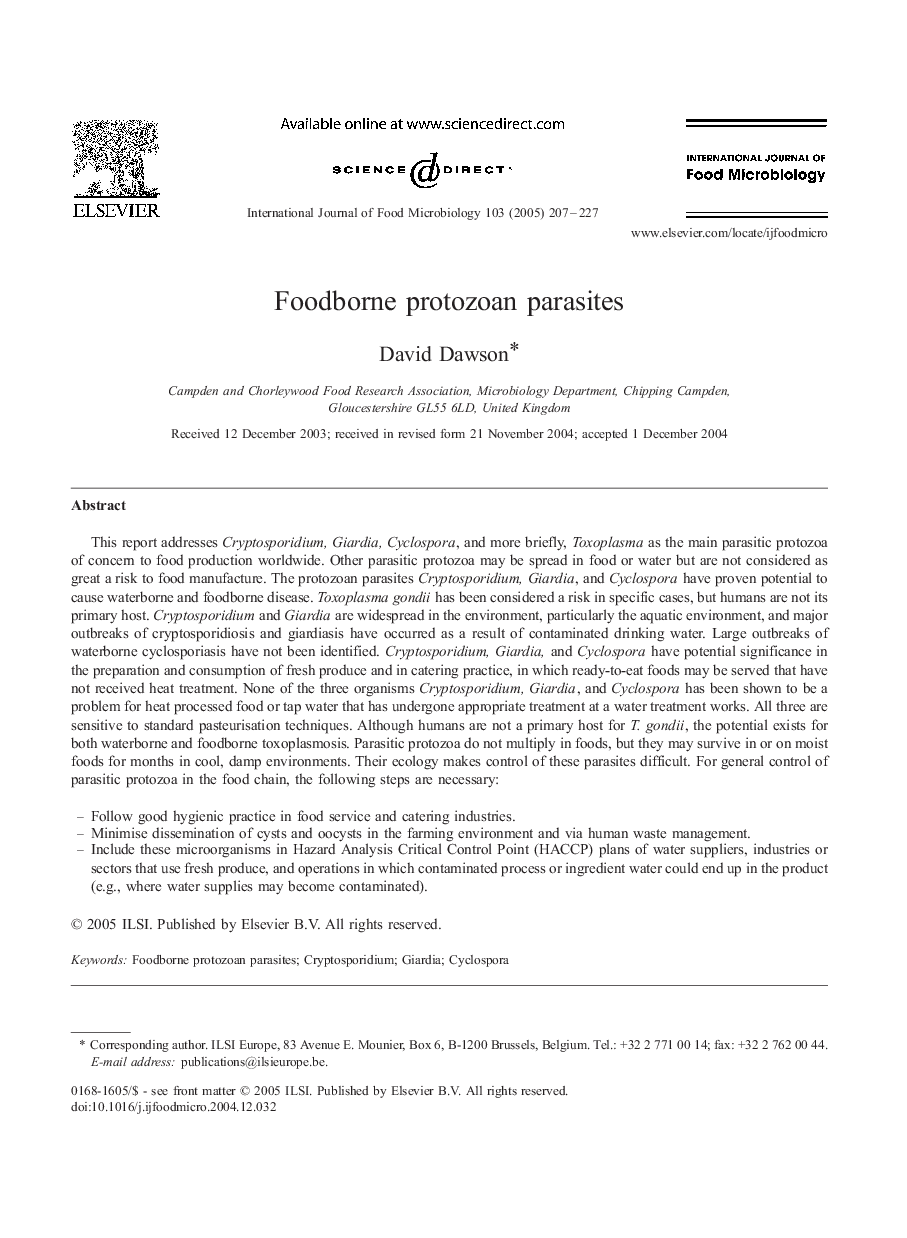| کد مقاله | کد نشریه | سال انتشار | مقاله انگلیسی | نسخه تمام متن |
|---|---|---|---|---|
| 10107333 | 1616785 | 2005 | 21 صفحه PDF | دانلود رایگان |
عنوان انگلیسی مقاله ISI
Foodborne protozoan parasites
دانلود مقاله + سفارش ترجمه
دانلود مقاله ISI انگلیسی
رایگان برای ایرانیان
موضوعات مرتبط
علوم زیستی و بیوفناوری
علوم کشاورزی و بیولوژیک
دانش تغذیه
پیش نمایش صفحه اول مقاله

چکیده انگلیسی
This report addresses Cryptosporidium, Giardia, Cyclospora, and more briefly, Toxoplasma as the main parasitic protozoa of concern to food production worldwide. Other parasitic protozoa may be spread in food or water but are not considered as great a risk to food manufacture. The protozoan parasites Cryptosporidium, Giardia, and Cyclospora have proven potential to cause waterborne and foodborne disease. Toxoplasma gondii has been considered a risk in specific cases, but humans are not its primary host. Cryptosporidium and Giardia are widespread in the environment, particularly the aquatic environment, and major outbreaks of cryptosporidiosis and giardiasis have occurred as a result of contaminated drinking water. Large outbreaks of waterborne cyclosporiasis have not been identified. Cryptosporidium, Giardia, and Cyclospora have potential significance in the preparation and consumption of fresh produce and in catering practice, in which ready-to-eat foods may be served that have not received heat treatment. None of the three organisms Cryptosporidium, Giardia, and Cyclospora has been shown to be a problem for heat processed food or tap water that has undergone appropriate treatment at a water treatment works. All three are sensitive to standard pasteurisation techniques. Although humans are not a primary host for T. gondii, the potential exists for both waterborne and foodborne toxoplasmosis. Parasitic protozoa do not multiply in foods, but they may survive in or on moist foods for months in cool, damp environments. Their ecology makes control of these parasites difficult. For general control of parasitic protozoa in the food chain, the following steps are necessary:
ناشر
Database: Elsevier - ScienceDirect (ساینس دایرکت)
Journal: International Journal of Food Microbiology - Volume 103, Issue 2, 25 August 2005, Pages 207-227
Journal: International Journal of Food Microbiology - Volume 103, Issue 2, 25 August 2005, Pages 207-227
نویسندگان
David Dawson,